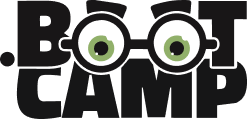
In today’s competitive job market, a strong portfolio is crucial for showcasing your skills and experience. Boot Camp courses, known for their practical, hands-on approach, offer an excellent way to build a portfolio that stands out. By focusing on relevant projects and presenting your work effectively, you can create a portfolio that truly reflects your capabilities and helps you advance in your career.
Why a Portfolio Matters
A well-crafted portfolio is more than just a collection of your work; it’s a visual resume that demonstrates your ability to apply what you’ve learned. While a traditional resume lists your skills and experience, a portfolio provides tangible evidence of your achievements. This is particularly important in creative and technical fields like digital marketing, graphic design, and web development, where employers prioritize practical experience over theoretical knowledge.
Choosing the Right Boot Camp Courses
To build a compelling portfolio, start by selecting Boot Camp courses that align with your career goals. It’s tempting to take multiple courses, but it’s more effective to focus on those that directly relate to the skills you want to highlight. For example, if you’re aiming for a career in digital marketing, courses in SEO, social media management, and content strategy are highly relevant. On the other hand, if graphic design is your focus, courses in Adobe Creative Suite, branding, and typography would be more beneficial.
Moreover, choose BootCamps that emphasize project-based learning. This approach ensures that you’ll have completed projects to include in your portfolio by the end of the course. These projects often simulate real-world scenarios, making them valuable additions to your portfolio.
Building Your Portfolio with Boot Camp Projects
Once you’ve completed your BootCamp courses, the next step is to organize your projects into a cohesive portfolio. Instead of including every project, select your best work that showcases a variety of skills. Each project should include a brief description outlining the project’s goals, your role, and the tools or technologies you used. This context helps potential employers or clients understand the scope of your work and your contribution to each project.
In addition to showcasing individual projects, consider including a detailed case study in your portfolio. A case study allows you to delve deeper into a specific project, discussing the challenges you faced, the solutions you implemented, and the results you achieved. This not only highlights your problem-solving skills but also demonstrates your ability to think critically and adapt to different situations.
Enhancing Your Portfolio with Personal Projects
While BootCamp projects form the foundation of your portfolio, personal projects can add depth and variety. Personal projects allow you to explore areas that may not have been covered in your BootCamp courses, demonstrating your initiative and passion for your field. For instance, if you’re a web developer, creating a personal website or a small app can showcase your coding skills. If you’re a graphic designer, you could create a series of logos, posters, or illustrations that reflect your unique style.
Personal projects also allow you to fill any gaps in your portfolio. If your BootCamp projects are concentrated in one area, personal projects can help diversify your portfolio, making it more appealing to a broader audience. Additionally, these projects give you the freedom to experiment with new tools and techniques, which can make your portfolio more dynamic and engaging.
Showcasing Your Portfolio Online
In today’s digital age, having an online portfolio is essential. An online portfolio not only makes your work accessible to a wider audience but also allows you to present it in a professional and visually appealing way. Platforms like Behance, Dribbble, and GitHub are popular choices for creative professionals and developers. Alternatively, you can create a custom website using platforms like WordPress or Wix, which offer more flexibility and customization options.
When designing your online portfolio, ensure that it’s easy to navigate and that your work is presented clearly. Potential employers or clients should be able to find the information they need quickly. Additionally, consider adding a blog or a section where you can share your thoughts on industry trends and insights. This not only adds value to your portfolio but also positions you as an expert in your field.
Promoting Your Portfolio on Social Media
Social media is a powerful tool for promoting your portfolio. Platforms like LinkedIn, Instagram, and Twitter allow you to share your work with a broader audience and connect with professionals in your industry. LinkedIn is particularly useful for professional networking, while Instagram and Twitter offer more creative ways to showcase your portfolio.
To maximize your reach, engage with your followers by sharing insights into your creative process, offering behind-the-scenes looks at your projects, and participating in relevant conversations. Regularly updating your social media profiles with new work and content keeps your portfolio in the spotlight, increasing your chances of attracting potential employers or clients.
Conclusion: Building a Portfolio with Boot Camp Courses
Building a portfolio with Boot Camp courses is an effective way to demonstrate your skills and experience. By carefully selecting courses that align with your career goals, curating your projects thoughtfully, and promoting your portfolio online and through social media, you can create a portfolio that truly reflects your expertise. With dedication and creativity, your portfolio can become a powerful tool in achieving your professional goals.
